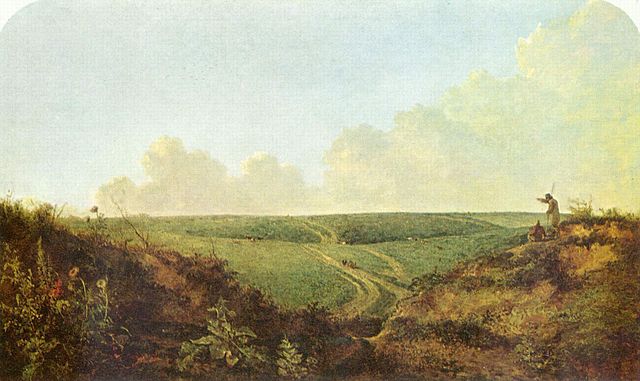Norwich Castle is a medieval royal fortification in the city of Norwich, in the English county of Norfolk. William the Conqueror (1066–1087) ordered its construction in the aftermath of the Norman Conquest of England. The castle was used as a gaol from 1220 to 1887. In 1894 the Norwich Museum moved to Norwich Castle. The museum and art gallery holds significant objects from the region, especially works of art, archaeological finds and natural history specimens.
Norwich Castle, March 2009
Plan of Norwich Castle keep by William Wilkins prior to alterations completed in 1793 by John Soane.
South-west view of the castle: watercolour and pen-and-ink drawing by Francis Grose, 20 October 1775
Architectural drawing by John Soane of his extension to Norwich Castle prison (completed 1793).
Norwich is a cathedral city and district of the county of Norfolk, England of which it is the county town. Norwich is by the River Wensum, about 100 mi (160 km) north-east of London, 40 mi (64 km) north of Ipswich and 65 mi (105 km) east of Peterborough. As the seat of the See of Norwich, with one of the country's largest medieval cathedrals, it is the largest settlement and has the largest urban area in East Anglia. The population of the Norwich City Council local authority area was estimated to be 144,000 in 2021, which was an increase from 143,135 in 2019. The wider built-up area had a population of 213,166 in 2019.
Norwich Cathedral is one of the great Norman buildings of England
Norwich Castle's 12th-century keep
St Ethelbert's Gate at Tombland was built as penance for riots which occurred in the 1270s
Mousehold Heath, Norwich by Norfolk-based artist John Crome








